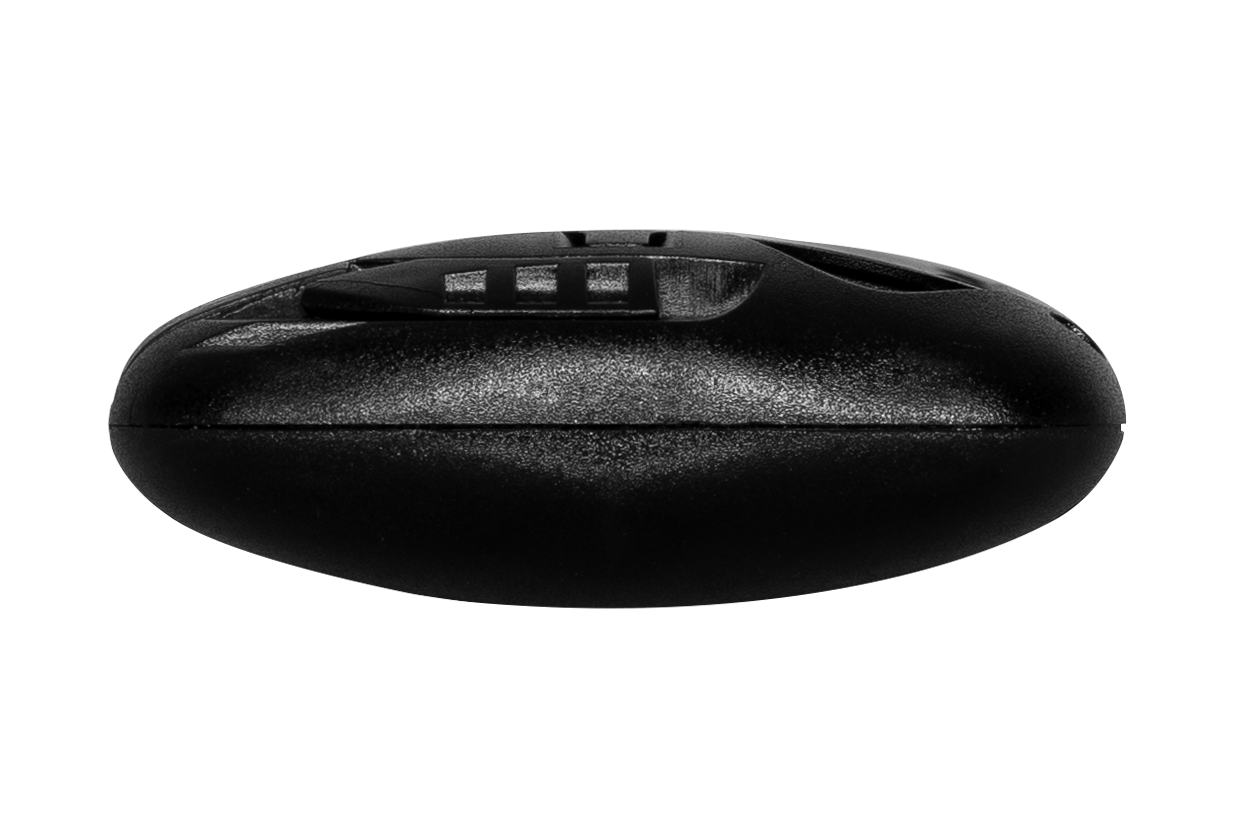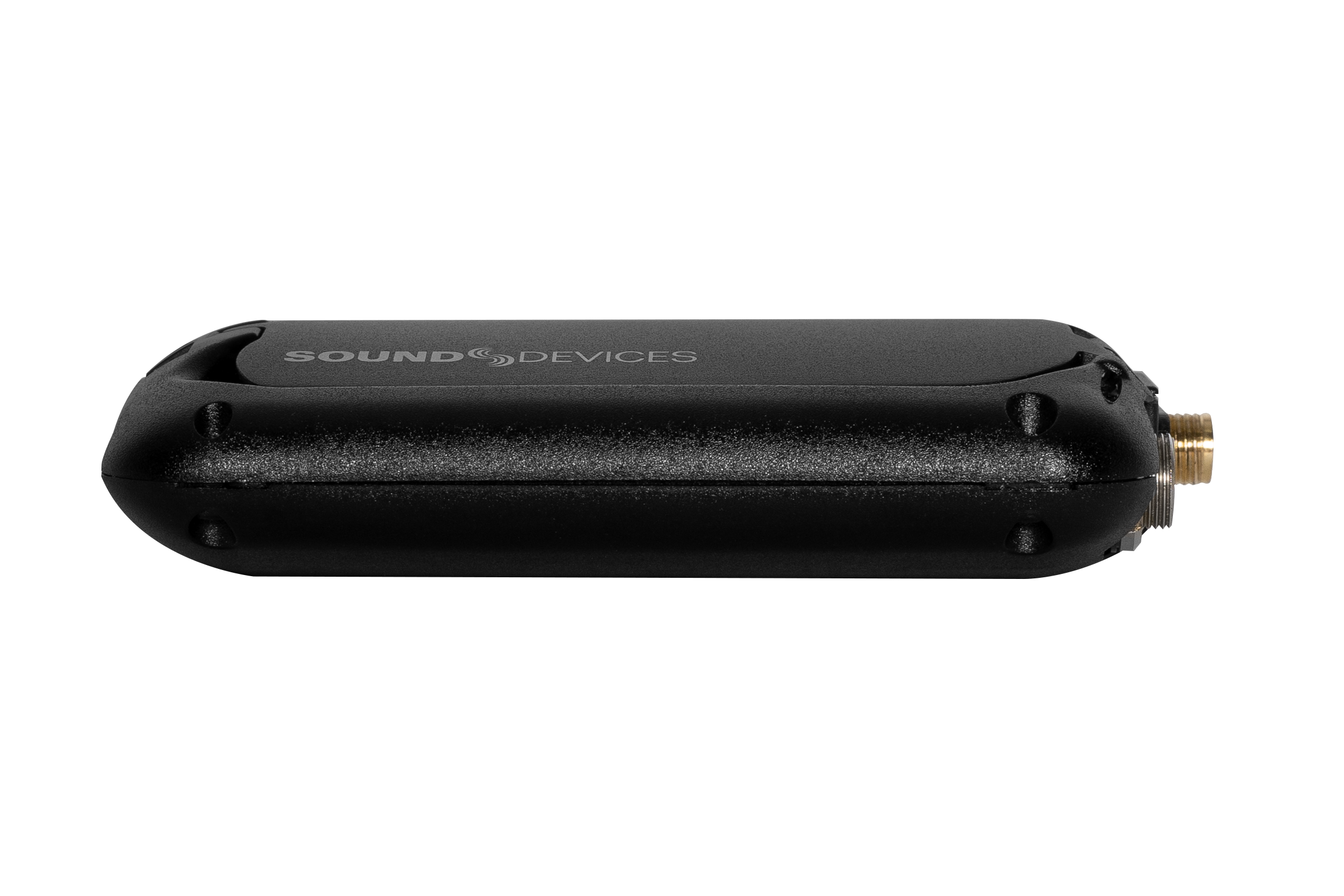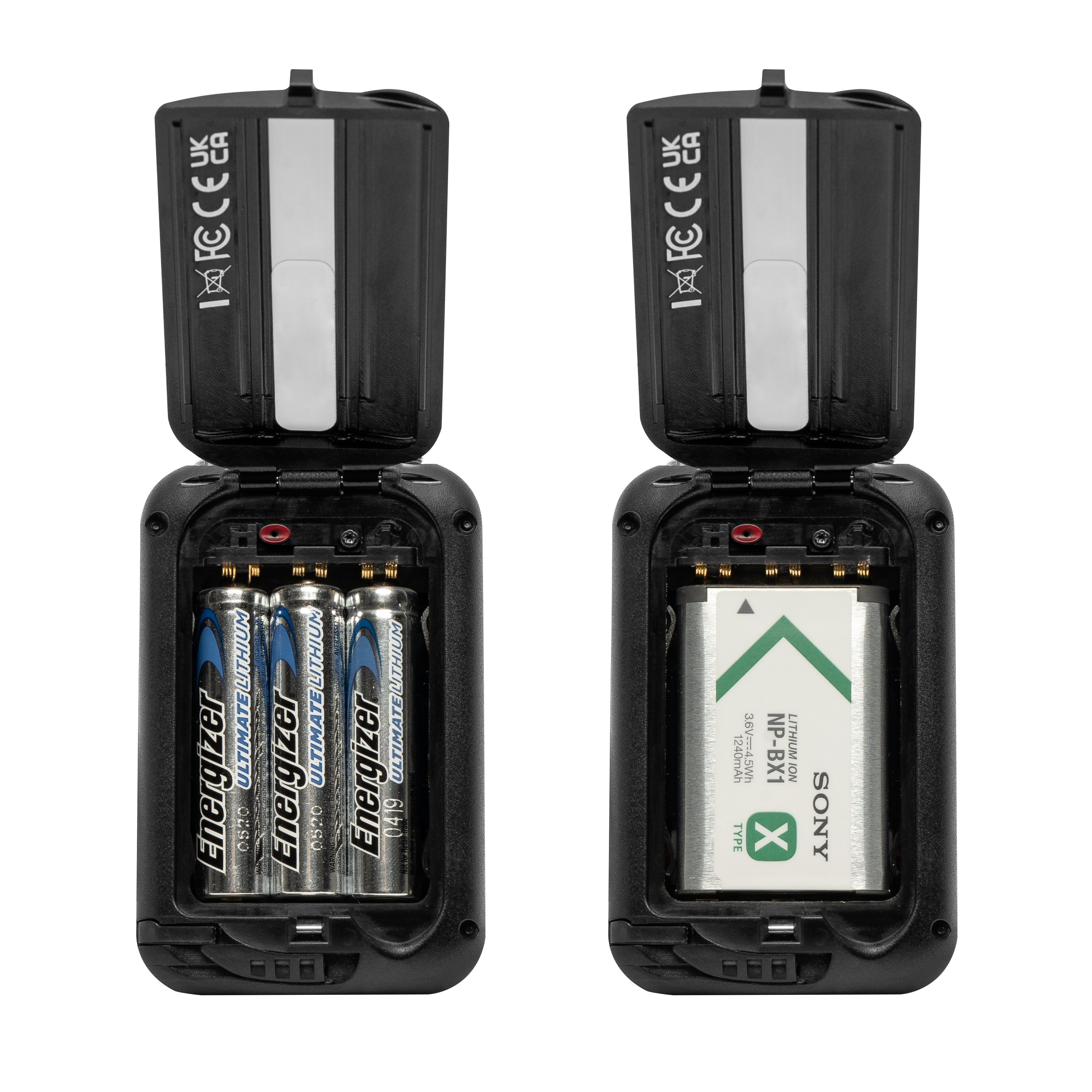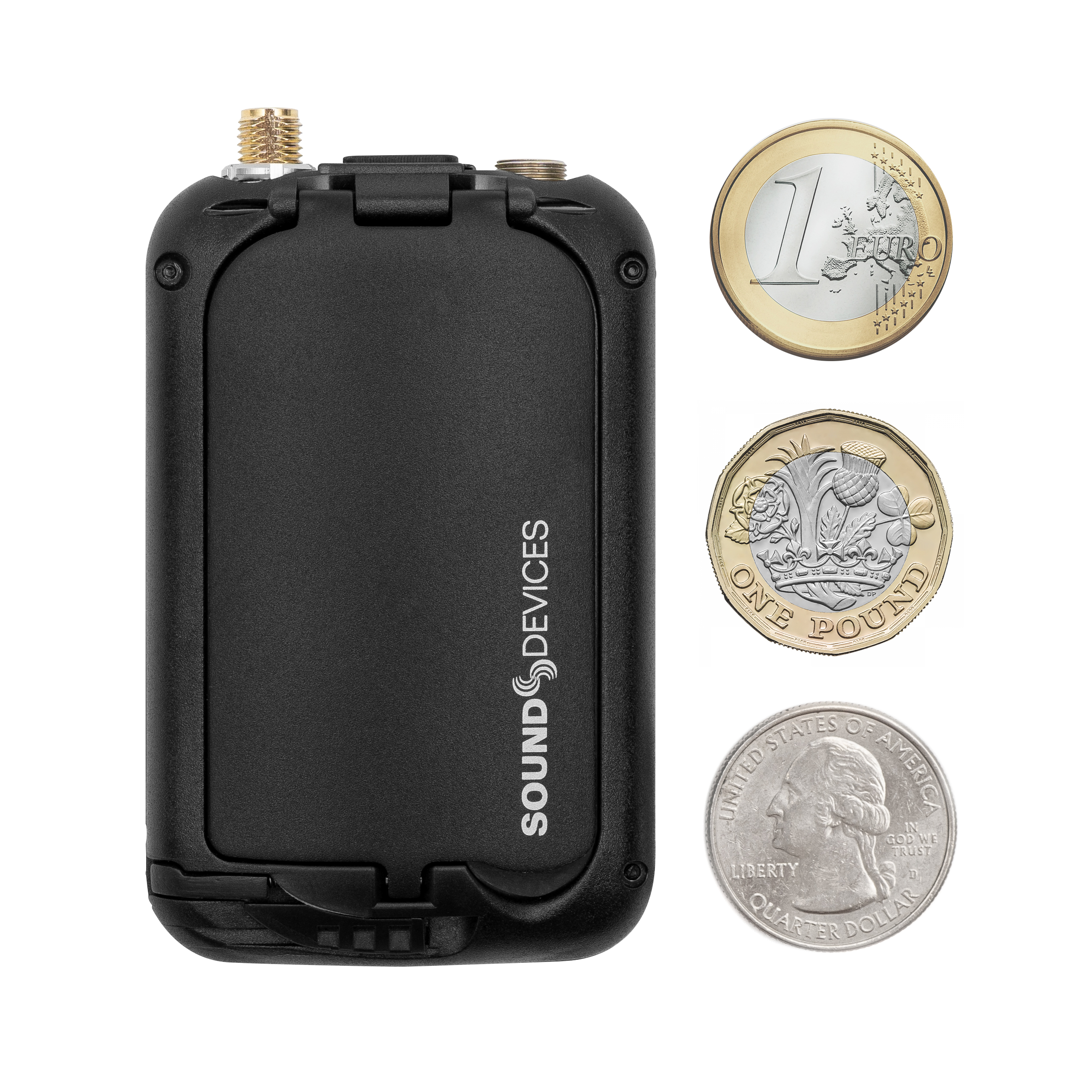A20-Mini
Tiny Digital Wireless Bodypack Transmitter with GainForward and SpectraBand
Gallery
Overview
Sound Devices’ first miniature transmitter incorporates state-of-the-art features such as full remote control via the A20-Remote app and NexLink, long range modulation, GainForward Architecture, SpectraBand’s 470 MHz – 1525 MHz tuning range, internal 32-bit float recording, and more. The A20-Mini is fully compatible with the A20-RX and the A10-RX.
- Worldwide tuning range of 470 MHz – 1525 MHz with the A20-RX & A20-Nexus
- Full remote control of the Mini via A20-Remote companion app.
- State-of-the-art 100% digital long-range modulation delivers the longest transmission distance of any system on the market.
- GainForward Architecture: set the Mini’s gain levels via trim control (with an 8-Series) or at the A20-RX/A10-RX (other mixers).
- Full 10 Hz – 20 kHz audio bandwidth; 100% digital RF modulation and transmission. Same excellent range and audio quality as the A10-TX.
- Built-in 32-bit float, 48 kHz recorder with 64 GB storage for over 80 hours of record time.
- USB-C for file offload and optionally conform/convert with SD-Utility.
- Powering via Lithium AAA or NP-BX1 (Li-Ion) batteries with built-in charging for NP-BX1.
- Internal timecode generator with supercapacitor backup can be jammed via USB-C.
- Water-resistant with a rounded form factor.
Longest range.
The A10/A20 Wireless System delivers the longest transmission distance of any system on the market.¹ The state-of-the-art, 100% digital long-range modulation offers the same great audio quality (10 Hz – 20 kHz) as our Standard modulation scheme with a longer range for both line-of-sight and heavy multipath transmission.
SpectraBand.
SpectraBand technology delivers a tuning range of 470 – 1525 MHz in a single unit – an industry first. Experience ultimate flexibility as you find open spectrum away from the crowded UHF TV band.
GainForward.
With the Mini’s GainForward Architecture, easily set the Mini’s gain, low-cut, and limiter directly on your 8-Series. This immediate, local control of gain allows quick adaptation to changing volume levels and saves time during production.
Group remote control.
All transmitters can be powered up and down simultaneously or made to start and stop recording with a single tap from your smartphone or tablet. Use A20-Remote to create custom groups with selected transmitters or use the default all-transmitter group. You can also use groups to change RF Power, Mode, Modulation, Mute Mic, Format Media, and LED settings on multiple A20-Minis at once. The A20-Mini’s high-efficiency internal 2.4 GHz antenna ensures excellent Bluetooth range.
32-bit float recording.
The A20-Mini records in 32-bit float for an astounding >130 dB of dynamic range. This allows for audio gain decisions to be made after recording, with zero loss in headroom or noise performance.
Built-in 64 GB media.
No more SD card management – the ample-sized media stores more than 80 hours of continuous, uncompressed 32-bit float recording. Simply offload the recorded WAV files via the high-speed USB-C port to a computer.
Sleek and small.
The A20-Mini digital wireless transmitter combines legendary British audio quality with the best of American design. The sleek, rounded form fits perfectly into body contours and underneath tight clothing.
Never lose time.
The Mini’s ultra-accurate 0.2 ppm internal timecode generator can be jammed via USB-C, or wirelessly via NexLink, with negligible drift over a 24-hour period.
Power away.
Use off-the-shelf rechargeable or AAA batteries – no adapter needed. 3 AAA batteries or a rechargeable Sony NP-BX1 give you the ultimate in powering flexibility. You can even recharge the NP-BX1 via the Mini’s USB-C.
Water-resistant.
With its extensive gasketing and waterproof connectors, the A20-Mini can easily withstand water and sweat.
PowerStation-8M
Optional accessory provides easy battery charging, file transfer, and timecode jamming of up to eight A20-Minis at a time. Powered via DC (TA4) or USB-C (USB-PD).
¹ When comparing systems with same transmit power, same antennas, and same transmission frequency.
Specifications
Frequency Range
- 470 to 1525 MHz (SpectraBand)
- Transmitters are tunable in 25 kHz steps
- Available frequencies are dependent on region
RF Output Power
- Off, Low – 2 mW, Normal – 10 mW, High – 20 mW, Max – 40 mW, selectable
Modulation Mode
- Proprietary digital RF modulation, Standard or Long Range, selectable
Antennas
- UHF RF: SMA connector, removable
- 2.4 GHz built-in
Audio Frequency Response
- 10 Hz – 20 kHz, +/- 1 dB re 1 kHz
Audio Input Type
- Lavalier Microphone via 3-pin LEMO
- Pin-1 ground
- Pin-2 5 V bias
- Pin-3 audio/bias (8k ohm to 5 V)
Bias Power
- 5 V
Input Impedance
- 8k ohms
Input Clipping Level
- +5 dBu
Dynamic range
- 130 dB min (A-weighted)
Menu and Controls
- Power & Pair button protected inside battery compartment
- A20-Remote, mobile device application of iOS, iPad, and Android
Remote Control
- A20-Remote Android, iOS, and iPad app via Bluetooth 5.2 LE
Recording Media
- Internal 64 GB
- 10% over-provisioned for optimum performance
Recording File Format
- 32-bit Float, 48 kHz, Monophonic
- Broadcast WAV (<4 GB), RF64 WAV (>4 GB)
Simultaneous Record and Transmit mode is not available on A20-Mini units sold or operated in the United States of America.
Timecode (LTC)
- Input via XL-TC-USBC-LEMO or XL-TC-USBC-BNC: 0.3 V – 3 V p-p (–17 dBu to +3 dBu), 20k ohm impedance
- Output via XL-TC-USBC-LEMO: 3 V p-p, 400 ohm impedance
Timecode Clock
- 0.2 ppm accuracy
- Holds accurate clock for four hours while powered down with batteries inserted, holds for one hour without batteries via internal supercap
- Auto Jams timecode from LTC source via USB-C connector, or from optional PowerStation-8M
Timecode Frame Rates
- 23.98, 24, 25, 29.97 DF, 29.97 ND, 30 DF, 30 ND
- Frame rates are auto-detected from incoming source
USB-C
- Mass Storage (USB-C): USB 2.0 high speed for file transfer
- Powers A20-Mini
Powering
- 3x AAA batteries (Energizer Ultimate AAA Lithium primary batteries recommended), or Sony NP-BX1 rechargeable Li-Ion
- Built-in Li-Ion charger via USB-C (7.5 W or more needed)
- Sony NP-BX1 is rechargeable via optional PowerStation-8M.
Environmental
- Water Resistant
- Operating: -20° C to 38° C, 0 to 90% relative humidity (non-condensing)
- Storage: -40° C to 85° C
Dimensions (H x W x D)
- 75.8 mm x 48 mm x 19 mm
- 2.98 in x 1.88 in x 0.74 in
Weight
- 51 g (without batteries)
- 1.8 oz (without batteries)
FAQ
Can the A20-Mini be upgraded to transmit with the new wider 470 MHz – 1525 MHz range?
Yes, simply download the free v6.00 firmware and update your transmitter.
Can the A10-TX be upgraded to transmit with the new wider 470 MHz – 1525 MHz range?
No, while the A10-TX will still work wonderfully with either the A10-RX or the A20-RX, it is based on older circuitry which cannot transmit with the wider tuning range.
Can the A10-RX be upgraded to an A20-RX and receive with the new wider 470 – 1525 MHz range?
Yes, this is a significant hardware update which requires a new RF board inside the A10-RX. You can upgrade the hardware of your receiver to the A20-RX for $995 USD or for $750 if you purchased your A10-RX within the last 12 months or an A20-Mini since June 1st. The upgrade program lasts until the end of 2022. Start your upgrade at service.sounddevices.com.
Please allow for 10-15 business days (2-3 weeks) to complete the upgrade.
Is SL-2, SL-6, and A10-Rack antenna distribution compatible with SpectraBand?
The SL-2 antenna distro has an upper frequency cutoff of 1.7 GHz and is compatible with the full SpectraBand range. SL-6 and A10-Rack have an upper frequency cutoff of 700 MHz and are only compatible with transmitters in 470-700 MHz.
With which receiver is the A20-Mini compatible?
Both the A20-RX and A10-RX receivers are compatible with the A20-Mini transmitter.
Can the A20-RX’s two channels be set to separate tuning bands?
Both channels must fall within the same tuning band, as the brick-wall filtering comes before any of the active circuitry for best performance. With the A20’s tight intermod-free channel spacing of 400 kHz and SpectraBand’s 20+ tuning bands, there are many frequencies to choose from – typically 60 frequencies per band.
Can the A20-Mini use balanced microphones?
The A20-Mini is specially designed for small size, and supports lav mics only. For using 48V phantom, balanced mics or balanced line sources, please use the A10-TX.
What is the Bluetooth range on the A20-Mini?
Many things in the environment can affect Bluetooth range, but line-of-sight you can typically expect up to 40 feet (13 meters).
What’s the difference between the RSSI and Q-meter?
The RSSI is a visual representation of how well the antennas on the receiver are picking up a wireless microphone. The Q-meter displays the difference between the signal from the transmitter and any interference. Use the Q-meter to confidently choose frequencies which will give the best performance and range. Learn more about the Q-meter at sounddevices.com/quality-meter
What’s the difference between Standard and Long Range Modulation?
When compared to Standard Modulation, Long Range has better sensitivity. This results in more robust performance in challenging RF environments. Standard modulation has a latency of 2 ms, while the long range modulation has a latency of 3.9 ms.
Can the A20-Mini use both 2-wire and 3-wire lav microphones?
Yes, unlike the A10-TX which only supported lavs which are 2-wire, the A20-Mini also supports 3-wire lavs such as the Schoeps CMR.
On the A20-Remote app, I notice a “License” icon near the frequency I have set. What is this?
This icon is a friendly reminder that you legally need a license from your local government to operate on this frequency.
I notice that the green audio LED glows with audio no matter what the GainForward gain is set to. Why doesn’t the brightness of the LED change?
The green audio LED on the A20-Mini is a very wide dynamic range indicator and thus indicates the entire dynamic range of the microphone. It is designed *not* to change with any gain settings. This indicator is used for a quick visual indicator that the microphone is working.
When is simultaneous record and transmitting available on the A20-Mini?
A20-Mini transmitters purchased in the United States of America do not have a simultaneous record and transmit (REC + RF) mode.
A20-Mini transmitters purchased outside the United States of America have a REC + RF mode. This mode is available when operating outside of the United States.
REC + RF mode is not available on any A20-Mini while operating in the United States.
How robust is the A20-Mini’s plastic chassis?
The A20-Mini’s chassis has an exceptionally high strength-to-weight ratio thanks to its aluminum/high-strength Ultem thermoplastic construction. Additionally, each piece of the chassis is curved in both directions, imparting a very stiff geometry. All together, the chassis feels very light, but extremely solid.
Why is the A20-Mini branded as Sound Devices and not Audio Ltd?
Sound Devices and Audio Ltd got married back in 2018. Though we both speak (more or less) the same language, we live in two different houses. Now you get both wonderful groups under one simple name, Sound Devices.
How many groups can I make in A20-Remote?
You can make one custom group with any transmitters you select. There is also an automatically-created “All Transmitters” group.
GainForward
Is the Bluetooth connection being used to remotely control the gain of the transmitter?
No, there is no remote control of the gain circuitry at all. There are two advantages to this over a system which does perform remote gain control of the transmitter: a) if the transmitter is out of range of Bluetooth/remote control, the gain can still be controlled by the mixer; b) the gain can be controlled as quickly as you can move the trim knob.
With GainForward’s high dynamic range, does this mean I don’t need to have low-sensitivity lavs anymore such as the Sanken COS-11 red dot?
No, low-sensitivity microphones are still needed for very loud sounds. Lavalier microphones themselves inherently have a more limited dynamic range than larger diaphragm microphones. Even though the A20-Mini itself can handle the entire acoustical and electrical dynamic range of any lav microphone plugged into it, lavs themselves can saturate with high SPL sources. Therefore there is still a need for different sensitivity lavalier microphones.
Can I use a non-Sound Devices mixer and get the benefits of GainForward?
Yes, the A20-Mini and A20-RX/A10-RX can be used with virtually any brand of mixer.
When sending analog audio from the A20-RX/A10-RX, use the Input menu to control gain, low cut, and limiter.
When sending AES audio from the A20-RX/A10-RX, allow the third-party mixer full control of gain, low cut, and limiter. When in this configuration, set the Input menus as follows:
Gain = 0 dB
Low Cut = Off
Limiter = Off
I’m using an A20-Mini without an SL-2 or SL-6. Can I still get the benefits of GainForward?
You can still get all the benefits of GainForward in any mixer/recorder without an SL-2 or SL-6 provided you set the output on the A10-RX or A20-RX appropriately. Please take reference “Can I use a non-Sound Devices mixer and get the benefits of GainForward?” elsewhere in this FAQ.
I’m using an A10-Rack with my 8-Series. Can I still get the benefits of GainForward?
Yes, you can still get all the benefits of GainForward in A10-Rack. Connect to the A10-Rack via Dante or AES. Set the A20-RX/A10-RX to unity gain (0 dB), then dynamically adjust the received signal level using the digital trim gain on the mixer/recorder. Full dynamic range, and zero lag level adjustments.
Can I come out of the A20-RX/A10-RX via the analog output and still get the benefits of the GainForward architecture?
Yes, provided you use the gain control provided on the receiver itself.
Does the AES output of the A10-RX and A20-RX have enough dynamic range for GainForward?
Yes, AES can transport 144 dB of the audio’s dynamic range, so it is definitely sufficient for the >130 dB of dynamic range of the lav microphone.
Is the A20-RX compatible with the SL-6?
Yes. There is full SuperSlot integration for A20-RX with SL-6 and the Scorpio mixer-recorder, meaning you’re able to control the A20-RX from Scorpio. There is UniSlot compatibility for A20-RX with SL-6 and 688. In this case, the A20-RX will receive power and send audio to SL-6/688, but control is local.
Is the A20-RX compatible with the A10-Rack?
Yes. Similar to the A10-RX, A20-RX will receive power and send audio to A10-Rack.
What’s the best practice for using A20-RX with an IFB or Camera Hop transmitter nearby?
It’s always best practice to separate your transmit and receive antennas as much as is practical. A20-RX includes robust front end filtering designed to minimize interference from strong nearby signals. We recommend placing an IFB or Camera Hop a minimum of 12 MHz outside of the tuning band. For example, if your A20-RX is set to the 562-588 MHz tuning band, place your IFB or Camera hop below 550 MHz or above 600 MHz.
What are the advantages to SpectraBand tuning?
Based on feedback from our user community, we designed SpectraBand to address two common problems, crowded RF spectrum and strong interfering signals. First, the 470-1525 MHz tuning range is unprecedented in a wireless microphone receiver. This opens up additional spectrum that is unavailable in other products. It eliminates the need for multiple pieces of hardware to cover these various frequency ranges. Second, we include robust front end filtering that minimizes interference from strong nearby signals. This allows you to work in closer proximity
Can I use the A-TA3 DC power inputs as a power pass through?
We do not recommend using the 4-pin Hirose and TA4 DC power connections to pass power through the A-TA3. Doing so could trip an internal fuse and disconnect power.
Can I connect two DC power sources to the A-TA3 DC power inputs simultaneously?
Do not connect multiple power sources to the 4-pin Hirose and TA4 DC power inputs simultaneously. Doing so can damage the power sources or receiver.
What is the A20-Mini battery run time when using the Sony NP-BX1 battery?
Up to 9 hours with the A20-BatteryDoubler accessory and 4.5 hours with a single NP-BX1.
What is the size of an A20-Mini with an A20-BatteryDoubler installed?
With the A20-BatteryDoubler fitted, the A20-Mini is still super-compact. Its height/width are unchanged, and depth is increased by 7 mm.
Dimensions are 75.8 mm x 48 mm x 26.5 mm (2.98 in x 1.88 in x 1.04 in)
Is it possible to easily swap the A20-Battery Doubler with the standard A20-Mini battery door?
Yes. Super-easy. If you know how to use a screwdriver, you can swap between them very quickly.
Does an A20-Mini with A20-BatteryDoubler installed fit in the PowerStation-8M?
Yes. You can charge up to four A20-Minis with A20-BatteryDoubler fitted. If you have an early PowerStation-8M, it can easily be modified for free to accommodate the
A20-BatteryDoubler. Contact Sound Devices or your local dealer to learn more.
Does the A20-Mini with A20-BatteryDoubler still fit in the A20-Mini-Holster?
Although it will comfortably slide into the holster, the strap is not long enough to velcro down. There are a number of 3rd parties that provide alternative solutions.





















